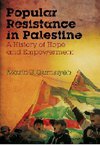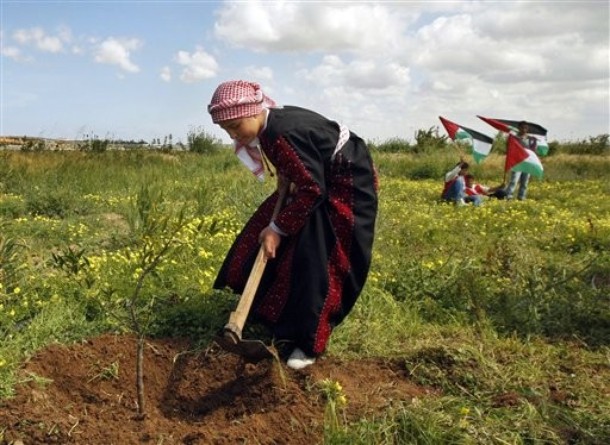Ilankai Tamil Sangam30th Year on the Web Association of Tamils of Sri Lanka in the USA |
|||
 Home Home Archives Archives |
Land Dayby Mazim Qumsiyeh, January, 2011
From Qumsiyeh's 2011 book "Popular Resistance in Palestine: A History of Hope and Empowerment"
This meeting, held in October 1975, included about 5,000 activists from many factions and created the Committee for Defense of the Land (Lajnat Al-Difa’ ’An Al-Aradi) with 100 members and an eleven-member secretariat. It began by protesting against the confiscation of 22,000 dunums in the Galilee and the declaration of an even larger parcel of land belonging to three villages (in the Al-Mil area) as closed military zones, with the intention of building nine Jewish settlements in this closed zone. A meeting was held in Nazareth on March 6, 1976. This included 48 heads of municipalities and local village councils and called for a day of protests and strikes on March 30, 1976 should Israel go ahead with its land confiscation policies. When it appeared the strike would take place, many areas outside of the Galilee joined it, including in the West Bank.11
The events coincided
with the secret Koening Memorandum which laid out plans for further
discrimination and ethnic cleansing to ‘make the Galilee more Jewish’. The
Israeli government condemned the leaking of the memorandum, but no
government official repudiated its racist content.12 After this successful
popular event, differences arose that weakened the organizing committee and
yet, the movement continues strongly to this day.13
|
||
|
|||
 Away from politics, grassroots efforts were functioning. The increased
mobilization among Palestinians inside the Green Line took a dramatic and
bold step forward with a large meeting in August 1975 in Nazareth attended
by 110 individuals to defend the land. At this meeting, a committee was
selected, headed by Anees Kardoush, to prepare for an even larger meeting.
Away from politics, grassroots efforts were functioning. The increased
mobilization among Palestinians inside the Green Line took a dramatic and
bold step forward with a large meeting in August 1975 in Nazareth attended
by 110 individuals to defend the land. At this meeting, a committee was
selected, headed by Anees Kardoush, to prepare for an even larger meeting. This became known as ‘Land Day’ throughout
Palestine. The events actually started on March 29, when a demonstration
against the Israeli army’s provocative mobilizations in the village of Deir
Hanna. Later that evening, the village of Araba Al-Batoof demonstrated in
solidarity and a young man, Khair Muhammad Yassin, was killed by Israeli
soldiers. He was the first martyr of the 1976 Land Day. More martyrs fell
over the next 24 hours. The events were well organized and participation was
high. The Israeli authorities reacted violently. Many were injured, six
nonviolent protesters killed and hundreds arrested.
This became known as ‘Land Day’ throughout
Palestine. The events actually started on March 29, when a demonstration
against the Israeli army’s provocative mobilizations in the village of Deir
Hanna. Later that evening, the village of Araba Al-Batoof demonstrated in
solidarity and a young man, Khair Muhammad Yassin, was killed by Israeli
soldiers. He was the first martyr of the 1976 Land Day. More martyrs fell
over the next 24 hours. The events were well organized and participation was
high. The Israeli authorities reacted violently. Many were injured, six
nonviolent protesters killed and hundreds arrested.